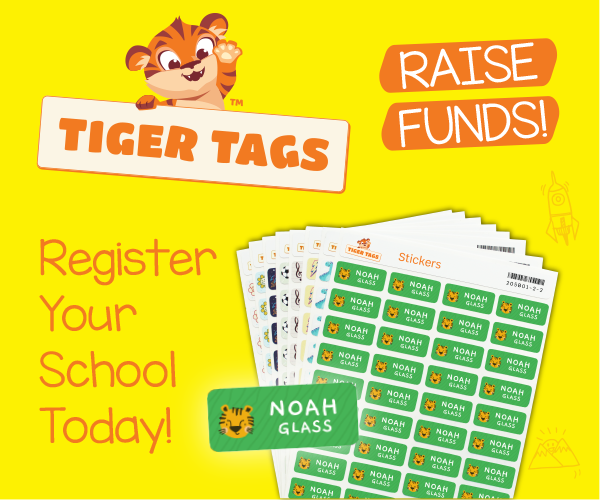With a ready-made network, schools are in the best possible position to make a success of digital fundraising, so what are you waiting for?
What is crowdfunding?
Rather than asking one donor for a large investment, crowdfunding asks a large crowd of donors to each make a small contribution.
This method of fundraising is especially effective for schools, given that you have a ready-made network of people in your community who have a vested interest in seeing your project succeed. Rather than tapping up the same group of people – your parents – time and again, crowdfunding enables you to appeal to a wider network of extended family, community groups and local businesses.
The benefits of a well-managed crowdfunding campaign go far beyond the extra funds in your bank... Crowdfunding helps raise awareness of your school’s vision, opens doors to new opportunities and partnerships, and increases your support base for future fundraising appeals.
What makes a good project?
If this is your first crowdfunding campaign, then concentrate on a project that is likely to motivate your community to donate. You will need to create a compelling story that clearly illustrates how your school will prosper as a result.
Explain how you will deliver the project, in what timeframe and who will benefit. Consider the amount of funding this project requires – having a successful launch project will enable you to follow up with subsequent campaigns in the future, so set a modest target, say between £1,000 and £5,000.
What should we include in our campaign?
Donors will want to know how their hard-earned cash will be spent, and that they can trust you to deliver. Cost out your funding target and provide a sensible plan to show donors that your project is feasible – include maintenance and running costs. Outline how additional funds will be used should you exceed your fundraising target, and what you plan to do in the event of a shortfall.
How do we get our project noticed?
Think of this as an advertising campaign – why do so many people share the John Lewis advert every Christmas? What will make people want to share your project? Research similar crowdfunding campaigns – were they successful, and how engaging was the pitch? Give your project a simple, attention-grabbing strapline and spend some time creating eye-catching visuals to be used on your website, on social media, in blogs, etc.
What’s the process?
The crowdfunding process can be split into four stages: plan, recruit, engage and finish.
Plan
Define what you want to achieve – put yourself in your donors’ shoes and think about the narrative you need to create to appeal to them. Prepare full project costings, and gather evidence from beneficiaries and stakeholders to show the impact your project will have.
Put together a database of potential donors and those who might also help share news of your campaign. Think about groups or businesses working in a similar field to that of your project as they will be more likely to support your campaign.
- Fundraising for playground and outdoor equipment
- Fundraising for big projects
- Ask the expert: Digital fundraising
Decide how long to run your campaign for – projects of up to four weeks in length tend to be more successful because a shorter project conveys a sense of urgency, focuses your promotional efforts and makes it easier to maintain momentum.
Prepare visuals to help share your passion for your project and to inspire people to give. Consider creating a one to two-minute video explaining how funds will be used, who will benefit and how – projects with videos are 147% more likely to be successful.
Compile a promotional plan and consider what rewards you can offer as an incentive for donors to be generous!
Recruit
Once you have identified potential supporters, select those you regard as your core team and ask them to help with the ‘soft launch’. Ask these people for feedback on your campaign and then make any adjustments in advance of your hard launch. Create some hype before you launch.
Include a clear call to action in all messages and aim to secure ten donations (30% of target) prior to launch. What local and national press does your audience engage with? Are there any upcoming local events at which you could promote your campaign?
Engage
Using your contact list, identify the communication channels that are most relevant to your audience (ie Twitter, Facebook, LinkedIn). To ensure that your story is consistent, create a bank of messages that your core team can share – these should explain who you are, your goal, why your project is so important and how funds will be spent. Prepare update collateral in advance, such as to announce milestones (ie launch day, 10% of funds secured, two weeks to go, etc). Review activity throughout the campaign and adjust your promotions accordingly.
After the initial launch you can expect there to be a lull – updates featuring messages from pupils or teachers will help invigorate supporters. Remind people of the great rewards you have on offer!
Finish
In the final week of your campaign, have a final push, posting social media updates that create a sense of urgency. Once your campaign has finished, thank your supporters and send personal emails to particularly generous donors or groups with whom you want to forge stronger links. Stay connected! Post regular updates on the progress of your project, using photos, press cuttings, etc. Fulfil any rewards – your crowdfunding platform provider should give a report with details for each reward level.
If you aren’t already registered with HMRC to claim Gift Aid, then register! Donors are asked to confirm whether they are a UK taxpayer and this information is included in a report once your campaign ends. Use this to add up to 25% more to the total raised.
Get in-depth guidance
Subscribe to our sister resource, FundEd, and get access to a wealth of targeted crowdfunding guides, including:
- Promoting your campaign: identify your likely support base using our mind-mapping template, and develop a marketing strategy to take you from pre-launch to the final push.
- Rewards: everything you need to know: what might encourage your donors to dig deeper? What makes a good cost-neutral reward?
- Scheduling a campaign: allow time to plan and prepare, recruit support, launch and engage donors and complete your campaign.
- Building a support base: supporters should include those who are likely to pledge money as well as those who could spread news of your campaign to the widest possible audience.
For more information, go to funded.org.uk.
To set up a campaign we recommend GoodHub (formerly InvestMyCommunity).
The above is intended as guidance only. We recommend that you contact the relevant organisations with specific reference to insurance, legal, health and safety and child protection requirements. Community Inspired Ltd cannot be held responsible for any decisions or actions taken by a PTA, based on the guidance provided.







.gif)